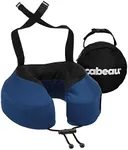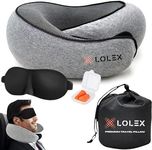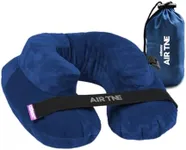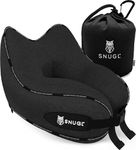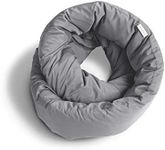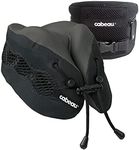Buying Guide for the Best Travel Pillows
Choosing the right travel pillow can make a big difference in your comfort during long journeys, whether you're traveling by plane, train, or car. The best travel pillow for you will depend on your sleeping style, the type of support you need, and how portable you want your pillow to be. It's important to think about how and where you'll use the pillow most often, and what features will help you rest better while on the move.ShapeThe shape of a travel pillow determines how it supports your head and neck. Common shapes include U-shaped, J-shaped, and rectangular. U-shaped pillows wrap around your neck and are great for keeping your head upright, which is helpful if you tend to nod off while sitting. J-shaped pillows offer extra chin support, which can be useful if your head tends to fall forward. Rectangular or traditional pillow shapes are more versatile but may not provide as much neck support. To pick the right shape, consider how you usually sleep while traveling—if you lean to the side, a U-shape might be best, while if you need chin support, a J-shape could be more comfortable.
Filling MaterialThe filling material affects both comfort and support. Common fillings include memory foam, microbeads, and inflatable air. Memory foam molds to your neck and provides firm support, making it a good choice for people who need extra stability. Microbeads are softer and more flexible, offering a cushier feel but sometimes less support. Inflatable pillows are adjustable and very compact when deflated, which is ideal for saving space, but they may not be as comfortable for long periods. Think about whether you prefer a firmer or softer pillow, and whether portability is a top priority for you.
Cover MaterialThe cover material impacts how the pillow feels against your skin and how easy it is to clean. Common materials include cotton, fleece, and synthetic blends. Cotton is breathable and soft, making it comfortable for long use. Fleece is warmer and cozier, which is nice for cold environments. Synthetic blends can be durable and moisture-wicking, which is helpful if you tend to get warm. If you have sensitive skin or plan to use the pillow in different climates, choose a cover material that matches your comfort needs and check if it's removable and washable for easy cleaning.
PortabilityPortability refers to how easy it is to carry and store the pillow when you're not using it. Some travel pillows are compressible or come with carrying cases, while others are inflatable and can be packed down very small. If you travel light or have limited space in your bag, look for a pillow that can be compressed or deflated. If you don't mind a bit of bulk for extra comfort, a memory foam pillow might be worth the space. Consider how much room you have in your luggage and how often you'll need to pack the pillow away.
Support LevelSupport level is about how well the pillow keeps your head and neck in a comfortable position. Some pillows are designed for maximum support, keeping your head upright and preventing it from falling to the side, while others are softer and allow more movement. If you often wake up with a sore neck after traveling, look for a pillow with firmer support. If you prefer to move around or don't need as much structure, a softer pillow may be more comfortable. Think about your past travel experiences and what kind of support helped you rest best.

